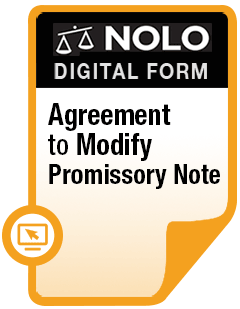Tax-advantaged accounts, such as FSAs, HRAs, HSAs, and MSAs, can help you save and pay for medical expenses.
Four types of tax-advantaged accounts help individuals and families save and pay for medical expenses that health insurance doesn't cover:
- flexible spending arrangements (FSAs)
- health reimbursement arrangements (HRAs)
- health savings accounts (HSAs), and
- medical savings accounts (MSAs).
These accounts differ in their eligibility requirements, contribution guidelines, and the advantages they offer to account holders. Learning the basics about each type of account will help you decide which one is right for you.
Flexible Spending Arrangements (FSAs)
A health care FSA, as opposed to a dependent care FSA, is an employee benefit that allows you to set aside money on a pre-tax basis to pay for medical expenses not paid by insurance.
FSA Eligibility
Generally, any employee whose employer offers an FSA as a benefit can participate. However, certain limitations may apply if you are a highly compensated or key employee.
If you are enrolled in an HSA, you might also be able to enroll in a "limited" FSA if your employer offers one. This account is similar to a regular FSA but limits qualified medical expenses to dental and vision so that it complies with HSA requirements.
FSA Tax Treatment
Contributions are made with dollars deducted from your paycheck before your employer calculates your taxes. The more out-of-pocket medical expenses you have over the course of a year, the higher your annual election (the amount you want to set aside in your FSA) should be, and the greater your tax savings would be.
Withdrawals for qualified medical expenses are typically tax-free.
FSA Contributions and Distributions
Your employer will deposit your annual election into your FSA in equal installments throughout the year, depending on your paycheck schedule. The employer also may contribute to your account.
The IRS places no limit on the amount of money you or your employer can contribute to the account. However, the plan itself is required to set either a maximum dollar amount or maximum percentage of compensation that can be contributed.
You can tap your FSA to pay qualified medical expenses up to your annual election amount, even if you have not yet placed the funds in the account.
To access account funds, pay for qualified medical expenses (which range from copayments and deductibles to orthodontics and eyeglasses) out of your own pocket and then submit a request for reimbursement. Or, you can use a debit card, credit card, or stored value card linked to the FSA if your employer provides one.
You cannot receive distributions from your FSA for health insurance premiums, long-term care coverage or expenses, or expenses that are covered under another health plan.
Health Reimbursement Arrangements (HRAs)
An HRA is an employer-funded account from which employees are reimbursed for qualified medical expenses not covered by the employer's health plan.
HRA Eligibility
Any employee whose employer offers an HRA as a benefit can participate, though contribution limitations may apply for highly compensated employees. You can take advantage of both an HRA and an FSA, if they are offered.
HRA Tax Treatment
Contributions by your employer aren't added to your gross income. Employees aren't taxed on their HRA reimbursements.
HRA Contributions and Distributions
Only your employer can contribute funds to your HRA, and the schedule and amount of the contributions are determined by your employer.
To use your available HRA funds, pay for eligible expenses and submit a request for reimbursement. Or, if your employer provides a debit card, credit card or stored value card linked to your HRA, you can use that to make payment.
Eligible expenses may include all medical expenses allowed by the IRS, or they may be limited by your employer. Unlike an FSA, an HRA does allow distributions for health insurance premiums and long-term care coverage.
Depending on your employer's policy, unused funds in your account may carry over to the next year.
Health Savings Accounts (HSAs)
An HSA is a tax-exempt account that allows account holders to use employer contributions and earnings to pay future medical expenses.
An eligible individual may establish an HSA at any number of banks, credit unions, insurance companies, or other entities that meet IRS requirements. Or, the account may be established as part of an employee benefits program.
HSA Eligibility
To be eligible for an HSA, you:
- must be covered by a qualified high deductible health plan (HDHP)—a health insurance plan with lower premiums and higher deductibles than a traditional insurance plan
- can't be covered by any other insurance that would pay for medical expenses, except those that provide benefits only for accidents, dental care, vision care, disability, long-term care, worker's compensation, a specific disease or illness, or a fixed amount per day of hospitalization
- must not be age 65 (the age when you become entitled to Medicare), and
- can't be claimed as a dependent by someone else.
You might or might not be eligible for an HSA if your employer offers a flexible spending account or a health reimbursement arrangement; it depends on the particular account the company offers.
HSA Tax Treatment
There are three ways to reduce your federal taxes with an HSA.
- Make pre-tax contributions to your account, or deduct your post-tax contributions from taxable income on your Form 1040, whether or not you itemize deductions.
- Enjoy tax-free earnings and growth on the money in your account.
- Make tax-free withdrawals to pay for qualified medical expenses.
State tax treatment of HSAs varies according to your state's law.
HSA Contributions and Distributions
Contributions to an HSA can come from you, your employer (if the company offers such a benefit), or both. For 2023, you can contribute up to $3,850. If you have family coverage, you can contribute up to $7,750. A catch-up provision of $1,000 also applies for participants who are over 55.
You can withdraw funds from your HSA, tax-free, to pay for any qualified medical expense not paid by your health plan. Qualified medical expenses are defined in IRS Publication 502, Medical and Dental Expenses. If you use your HSA funds for anything other than qualified medical expenses, you will pay taxes on the withdrawal. If you are not disabled or older than 65, you also will be subject to a 20% penalty.
Unlike a flexible spending arrangement (discussed below), an HSA allows unused funds to roll over from year to year. There is no limit on how much you can accumulate in your HSA for future use.
Medical Savings Accounts (MSAs)
Like an HSA, an MSA is a tax-exempt account that allows account holders covered by a high-deductible health plan to save for future medical expenses. But the introduction of the more flexible HSA (described above) has made the MSA obsolete.
MSA Eligibility
The MSA, also known as the "Archer MSA," was created specifically for self-employed individuals and small business employees.
MSA Tax Treatment
An MSA offers the same tax benefits as an HSA (see "HSA Tax Treatment," above).
MSA Contributions and Distributions
You can no longer open a new MSA and you can't contribute additional money into an existing MSA. You can, however, continue to maintain an existing MSA and take tax-free distributions to pay for qualified medical expenses. If the account still has a balance when you retire, it will be converted to an individual retirement account (IRA).
Unless you are disabled, MSA distributions for anything other than qualified medical expenses prior to age 65 are subject to income taxes and a 15% penalty. Distributions made after age 65 for non-qualified expenses are subject to income taxes, but there is no penalty.
The account balance can roll over from year to year.
Learn More
There is much more to know about each of these accounts. To learn more about the particular type of account that is available to you or that you are considering establishing, check with your employer or see IRS Publication 969, Health Savings Accounts and Other Tax-Favored Health Plans.
If you're an independent contractor, freelancer or consultant and want to know more about HSAs, get Working for Yourself, by Stephen Fishman (Nolo).
Talk to a Lawyer
Need a lawyer? Start here.
How it Works
- Briefly tell us about your case
- Provide your contact information
- Choose attorneys to contact you
- Briefly tell us about your case
- Provide your contact information
- Choose attorneys to contact you



